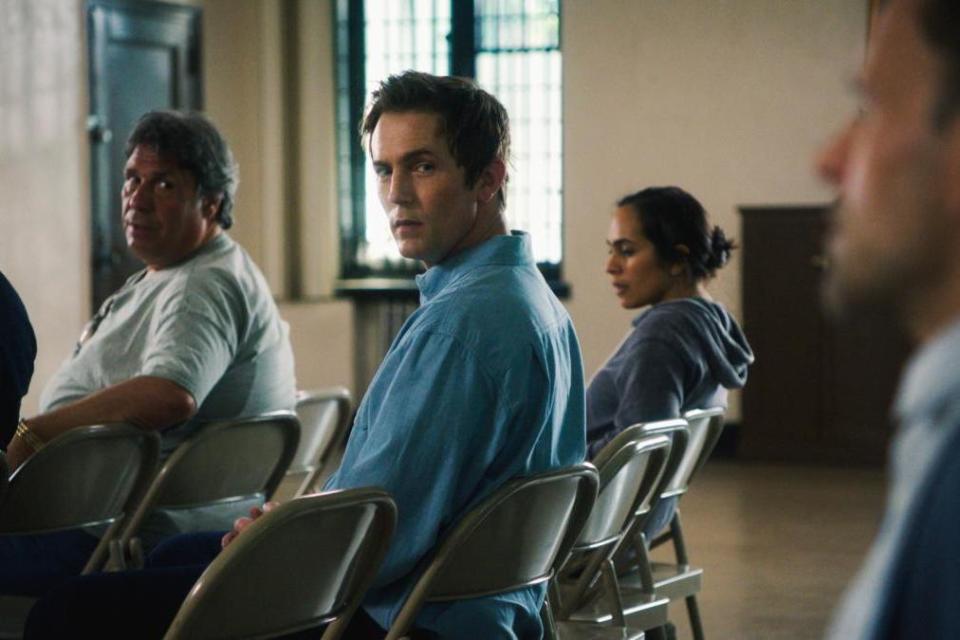How 'Elementary' managed to avoid the Moriarty problem with its latest villain

When talking about villains in Sherlock Holmes adaptations such as Elementary, it’s rather impossible to avoid discussing Moriarty.
Professor James Moriarty, “the Napoleon of crime”, is perhaps one of literature’s most famous villains; first portrayed on screen over a hundred years ago by Ernest Maupain, Moriarty has been a staple of the various Sherlock Holmes adaptations since. Indeed, of the two most recent high-profile Holmes adaptations on television, their respective takes on Moriarty have been amongst their most popular characters; both Andrew Scott and Natalie Dormer were met with much acclaim for their performances as Moriarty in Sherlock and Elementary respectively.
All of which, then, can make it all the more difficult for a programme like Elementary to find a new villain to take on Holmes and Watson – particularly when, as noted above, their own interpretation of Moriarty has already been so successful. Certainly, Sherlock struggled, with neither Charles Augustus Magnussen or Eurus Holmes having been received as well as Moriarty, and much the same can be said of Elementary too, with its offerings of blah and blah failing to leave much impact. It’s not that they were bad villains, or at least not necessarily anyway, rather that it’s always going to be difficult to match Moriarty – there’s a certain weight to Moriarty that’s rarely matched by other characters.
Moving into its sixth season, however, Elementary has risen to the challenge and then some, introducing a new villain who – within the context of the CBS procedural, anyway – looks to be their first antagonist to rise above what we’ll call ‘the Moriarty problem’.
Across its six season run, Elementary has foregrounded addiction and recovery in their iteration of Sherlock Holmes; we’ve seen Holmes attend meetings, work with a sponsor, and at times relapse. Indeed, Elementary’s pilot introduced Holmes as only recently out of rehab, with Watson his sober companion – Holmes’ work towards maintaining his sobriety, and the role his detective work plays in that, is the crime drama’s most consistent running thread, the backbone of the entire series. When the show has engaged closely with that, it’s been at its best; indeed, Elementary’s version of Moriarty had been tied to Sherlock’s drug use, an echo of a past breakdown.

With its new villain, then, Elementary has found a new way to riff on this approach – again, an antagonist for Holmes linked to his struggle for sobriety, an equal and opposite reflection of the great detective.
Introduced in the season 6 premier, Michael (Desmond Harrington) is a recovering addict much like Holmes. Michael credits Holmes with the success of his recovery, telling him “you said [at a meeting] you were made for one thing, and being away from it made staying sober almost impossible, but when […] you went back to it, that made all the difference. So, I actually decided to do the same thing, you know, focus on my work, use it to get better […] I worked hard, but, uh it started with you.”
In marked contrast to Holmes, though, the work that helps keep Michael sober is murder; where Holmes uses his detective work as a coping mechanism, Michael is a serial killer with similar struggles and compulsions. It’s a clever conceit, drawing obvious parallels between the two, positioning Michael as a mirror of Holmes in broadly the same way Moriarty has been in the past; indeed, it wouldn’t actually be that surprising to learn that this character is drawn from ideas at one stage considered for Elementary’s version of Moriarty. Notably, though, where the parallels between Holmes and Moriarty are typically drawn from their occupations – the consulting detective and the consulting criminal – the ones between Holmes and Michael are much more personal in nature. It’s an approach that offers potential for some compelling character drama, again an opportunity for Elementary to further explore Holmes’ sobriety.
Granted, there’s potential for it to go wrong; while Elementary has largely managed to eschew the “we’re not so different, you and I” cliché with Michael (indeed, actively refuting it at one point), it’s far from impossible the show might still fall into that trap. Nonetheless, the basic conceit, that Holmes’ new best friend could’ve stumbled in from a neighbouring procedural about a serial killer struggling with sobriety (there’s a certain meta-significance to casting Desmond Harrington, best known from Dexter) is an engaging trick for the crime drama to pull.
Ultimately, it’s encouraging to see that Elementary has been able to solve the Moriarty problem that so often plagues Sherlock Holmes adaptations (even if, arguably, it’s done so by borrowing aspects of the famous villain) – with a seventh season on the way, it’s a great position for the show to be in.
Related:
Safe‘s story of paranoia and secrecy does an impressive job of standing out in a crowded genre
The power, passions, and people of A Very English Scandal
Like this article? Hate this article? Why not follow me on twitter for more, or send me a message on facebook to tell me what you thought? You can also find more of my articles for Yahoo here, or check out my blog here.

 Yahoo Movies
Yahoo Movies 

